Inca Food, Past and Present
The Inca food supply differed greatly from that of contemporary Europe. The Incas had few large animals for domestication and lacked the comparatively abundant source of eggs, milk and meat found in the Old World. Through intelligent administration and agricultural techniques, however, the Inca Empire was able to feed its ever-expanding population.
For the peasantry, this still meant a life of subsistence — a tough and practical diet of two basic meals a day. The Inca nobility, meanwhile, enjoyed the finest foods from the four corners of their vast empire.
Almost 500 years after the fall of the Inca Empire, and despite the introduction of Old World livestock and the influence of global cuisine, many Inca ingredients, and those of their predecessors, still lie at the heart of Peruvian food.
What Did the Incas Eat?
Inca Crops
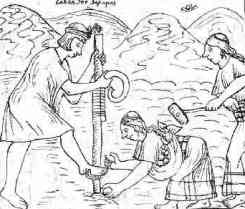
Inca farmers planting potatoes
Food crops were vital to the success of the Inca Empire. Lacking viable and consistent sources of meat, the Incas, particularly the peasantry, lived on a largely vegetarian diet. Thankfully, the Incas were “master agriculturists,” as stated in Lost Crops of the Incas:
“They borrowed seeds and roots from their conquered neighbors and forcibly spread a wealth of food crops throughout their empire, even into regions where they were previously unknown.”
These crops, many of which remain an important part of the modern Peruvian diet, included:
- Amaranth: known in Quechua (and throughout Peru) as kiwicha, amaranth grains formed a large part of the Inca diet. While little larger than poppy seeds, amaranth grains grow in vast quantities; one plant can hold more than 100,000 grains.
- Peppers: the main seasoning of the Incas, ají chili peppers remain hugely influential in modern Peruvian food. Prime examples include the hot rocoto pepper and Capsicum baccatum, better known as ají amarillo (famed Peruvian chef Gastón Acurio considers this the most important ingredient in Peruvian cuisine).
- Maize: the Incas, like modern Peruvians, prepared and consumed this versatile cereal crop in a number of ways, including straight from the cob, ground and compressed to make tamales, and in the production of fermented and non-fermented beverages (chicha).
- Yuca: also known as cassava or manioc, the Incas cultivated yuca plants for their edible roots and for the production of flour (manioc flour). Both are still common in Peru.
- Oca: another important root crop, the hardy oca plant is well suited to harsh, high altitude environments. For the Incas, oca was almost as important as the potato, and it remains a staple root crop in the Peruvian highlands.
- Potatoes: the potato originated in southern Peru and was first cultivated by pre-Inca civilizations between 8,000 BC and 5,000 BC — long before the Columbian Exchange introduced potatoes to the world. By the 1500s, the Incas were cultivating more than 200 varieties of potato (perhaps many more), a process that continues in the Andean highlands today. The Incas also produced chuño (also known as tunta), a freeze-dried potato product which, once prepared, could last for many months without spoiling. Andean highlanders still produce chuño today.
- Quinoa: the grain-like quinoa was an important food crop for the Incas, often supplying entire armies on the march. In a diet lacking protein, the high-protein food was a blessing to the Incas, who called it the chisiya mama, or “mother grain.”
- Zapallo: commonly known as squash, zapallo is yet another crop of South American origin.
- Maca: Lepidium meyenii, commonly known as maca, is native to a small region of the Andes, most notably the high-altitude puna grasslands near Lake Junín. In recent years, maca has enjoyed considerable global attention as a supplement, specifically for its energy and mood enhancing properties and as an aphrodisiac. At the time of the Spanish Conquest, various chroniclers, including Felipe Guaman Poma de Ayala and Bernabé Cobo, mentioned the use of maca within highland settlements of the former Inca Empire.

Inca Fruit & Nuts
Like modern Peruvians, the Incas had access to a seemingly endless variety of fruits. Papaya, passion fruit, pepino, tomato, tree tomato (tamarillo), lucuma, cherimoya, cactus fruit (tunas), ice-cream beans (pacay), various berries; the list goes on and on.
Nuts provided another valuable food source. Varieties included peanuts, the Andean walnut and the nut of the Quito palm.
The Inca Meat Supply
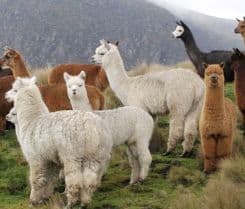
The Incas used alpacas for their fiber and meat (photo © Philippe Lavoie)
In the absence of sheep and cattle — and with the nobility laying claim to the majority of the empire’s livestock and hunting rights — the typical Inca diet did not include much meat.
With only two large domesticated animals (alpacas and llamas), much of the meat supply was obtained through hunting and gathering:
- Alpaca: domesticated long before the Incas, alpacas were an important source of fiber and meat. The Incas used alpacas for fine garments and upper class feasting — the animal was too small for use as a pack animal, and its meat too valuable for distribution among the peasantry. In today’s global market, alpaca wool is far more common and more sought-after than alpaca meat. In Andean nations, however, alpaca steaks remain a luxury.
- Llama: Both the Incas and their predecessors used llamas for their wool and their meat. Llamas were also vital as pack animals in a land without horses. The Incas dried strips of llama and alpaca meat to produce charqui, the forerunner of modern jerky.
- Deer: like their European counterparts, the Inca nobility enjoyed hunting wild deer. The hunting of large game was strictly controlled, with severe punishments in place for “poaching.”
- Guanaco: another South American camelid, the guanaco is a wild relative of both the llama and alpaca. Once again, only the privileged were permitted to hunt guanacos.
- Duck: duck meat was normally reserved for the Sapa Inca (Inca emperor) and his immediate circle.
- Guinea pig: an important source of protein for both the Incas and their predecessors, domesticated guinea pigs (cuy) were typically eaten during special occasions. Cuy remains a popular dish in modern Peru.
- Frogs: for the Inca peasantry, frog meat was a useful supplement in a diet lacking protein. Frogs are no longer part of typical Peruvian cuisine.
- Insects: the Incas, like the Aztecs, supplemented their diet by foraging for insects. These included caterpillars, beetles, ants and grubs. Adventurous culinary travelers can still sample hormigas culonas (big-bottomed ants) and large suri grubs during their travels in Peru.
Fish and Coastal Creatures
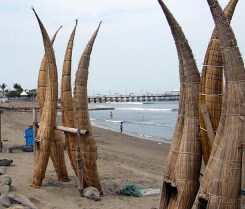
Caballitos de totora in Peru (photo © Theodore Scott, flickr.com)
The Inca heartlands were located in the Andean highlands, at some distance from the Pacific coast. Traditionally, therefore, the Incas caught fish (and hunted aquatic birds) in highland lakes and rivers.
During its rapid expansion, however, the Inca Empire absorbed many coastal cultures. Not only did the empire acquire a coastline, it obtained, through conquered and assimilated tribes, the knowledge required to harvest coastal resources.
More than 2,000 years prior to the Inca Empire, coastal fishermen had been using reed watercrafts, known as caballitos de totora, to harvest the ocean with net and line (similar vessels existed on Lake Titicaca, but the sea was a different prospect).
The coastal catch included everything from salt-water fish such as bonito (similar to tuna, still popular in Peru) to rays, sharks, skates and dolphins. Fish was often preserved through drying, providing another durable source of food for Inca armies on the move.
The coastline was also ripe for foraging and hunting. Inhabitants of the coast gathered limpets, mussels and seaweed for use in stews. Larger coastal creatures were also fair game, including seabirds, sea lions and, along the southern coast, penguins.
If this sort of thing whets your appetite and you would like to check out a modern twist on Incan cuisine why not try some Peruvian cooking classes, you can check out the options and make a reservation here.
ENTERTAINMENT TIP: If looking for fun at night, or to watch sports during the day, or even a taste of home, visit the Wild Rover Hostels Chain for great food, sports and beer! Entrance to their bars is free even for non-guests
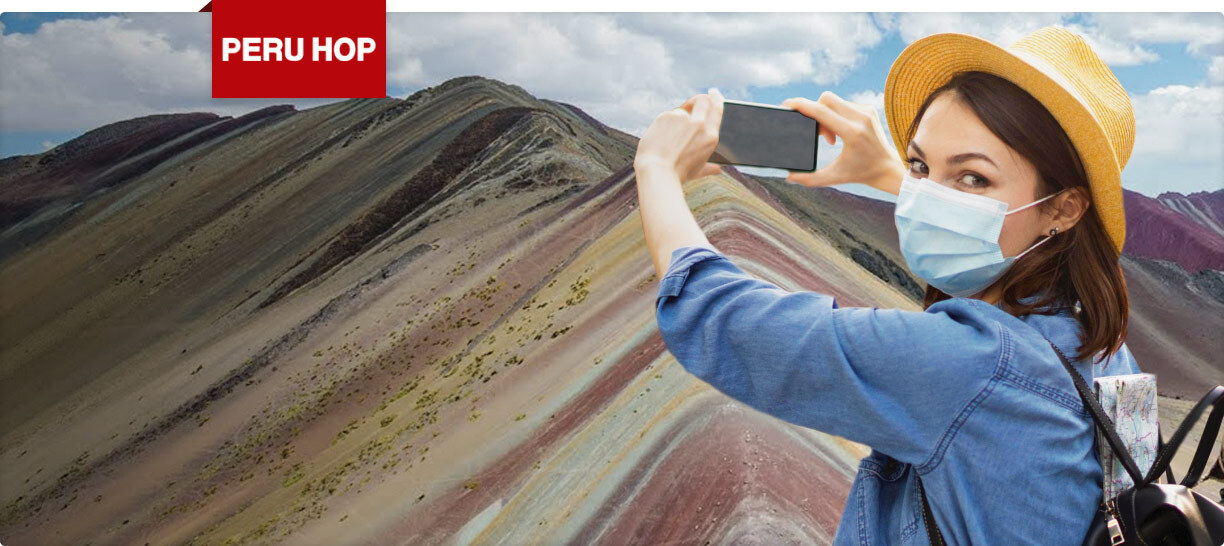


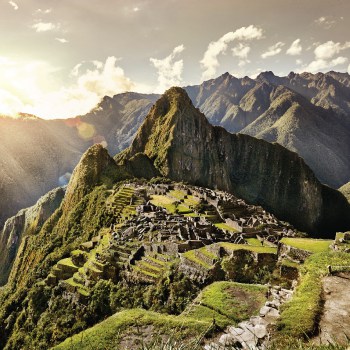






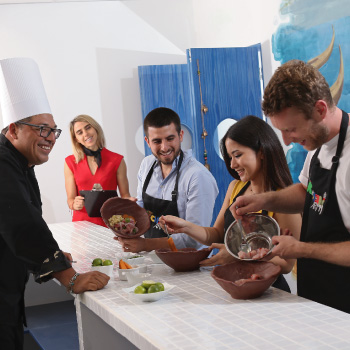
7 comments for “Inca Food, Past and Present”